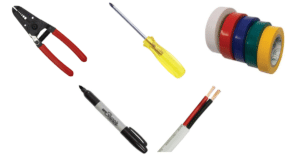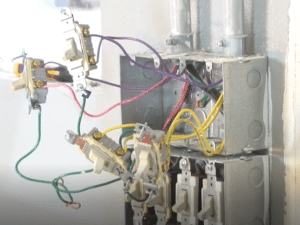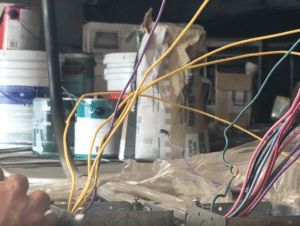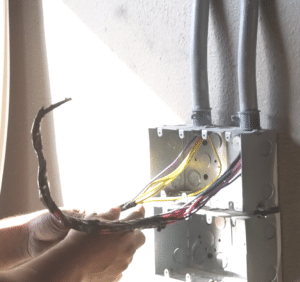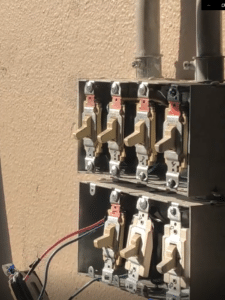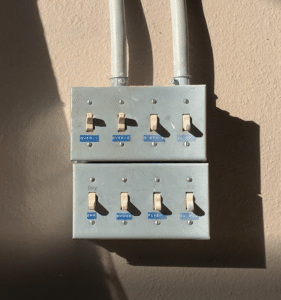Moving a surface-mounted electrical box appears to be a job beyond the reach of most do-it-yourselfers. However, if you take the proper precautions and preparations, this project can be completed in just six steps.
Tips on Moving a Surface-Mounted Electrical Box
Follow the following steps to move the surface-mounted electrical box safely.
Things you need to do this job right:
- Wire stripper/cutter
- Screwdriver
- Colored electrical tape
- Permanent marker
- CAT 12 Romex electrical wire (if you are transferring the box to a farther location)
Step 1 – Turn off power at the Junction Box
You will find the switch to connect to your particular junction box in your house’s breaker box. Power this off to stay safe on the job.
Step 2 – Dismantle the Junction box
Use your screwdriver to remove the front plate and unscrew all the switches from the casing.
Then, cut the wires that connect the switch.
In our example, our technician marks each pair of electrical wires with colored tape and numbers them with a permanent marker to keep track of them.
The technician also labels the switches that correspond to those wires. This organization will make things easier when you must reattach these wires to the new electrical box.
Step 3 – Find the source and pull the wires
You will need to find the junction box that is the source of the wires on the house exterior or in your attic. In our example, the electrical wires (or Romex wires) went through the hole drilled through the top plate or header beam.
The loose wires were pulled from the ceiling through the source junction box.
With the wires out of the way, you can remove the junction box and the metal conduits (the pipes) attached to the box.
If you need to lengthen the wires for the power source to reach the new location, you can splice the wires with more Romex wire; CAT-12 Romex wire is the standard used in most residential areas.
Step 4 – Reinstall metal conduit and junction box
When you have determined the new position of the surface-mounted multi-gang electrical box, install the metal conduit first, drilling any new holes that are needed through the studs for the installation.
Then, install the frame junction box to the conduit pipes so that you have something to attach to. Make sure the box is level, and mark where the anchor screws will go.
Feed the wires back through the conduit; if you tape the wires using electrical tape to narrow the bundle, it will be easier to feed through the pipes. Then, pull out the wires through the installed junction box.
Step 5 – Reinstalling the wires and switches
After unbunching the wires that you put through the conduit, take wire strippers and strip the casing from the wires. If you labeled everything initially, you can match the wires to the corresponding switches.
Step 6 – Finish it up!
With all of the switches in place, replace the switch cover. Turn the power back on from the breaker box and the transition is complete!
For more remodeling tips from Dillon in his Home Remodeling series, check out our other DIY videos on Best Online Cabinets!

